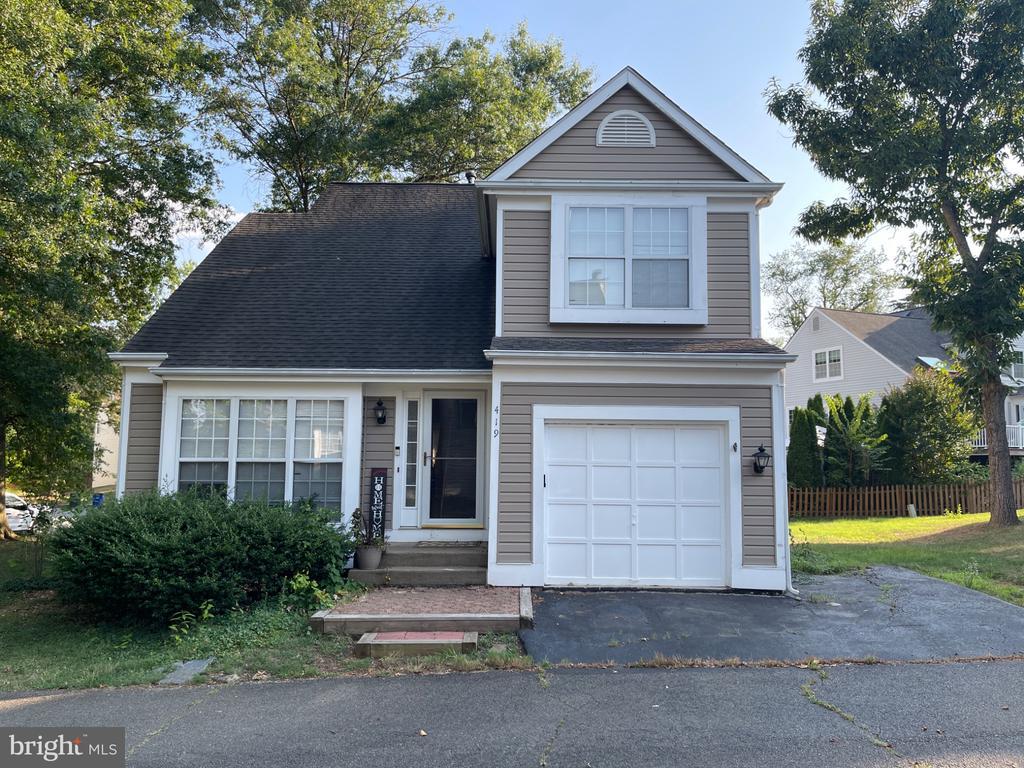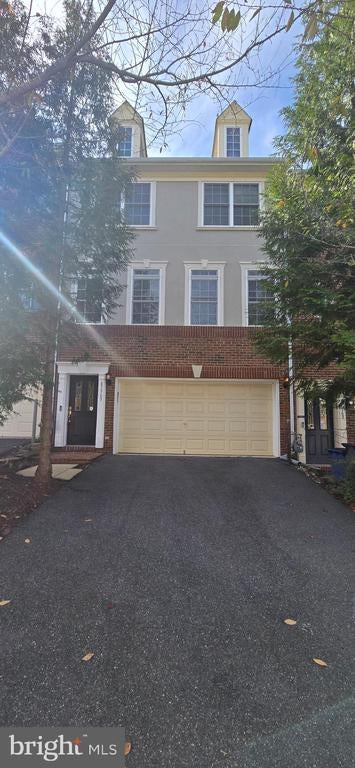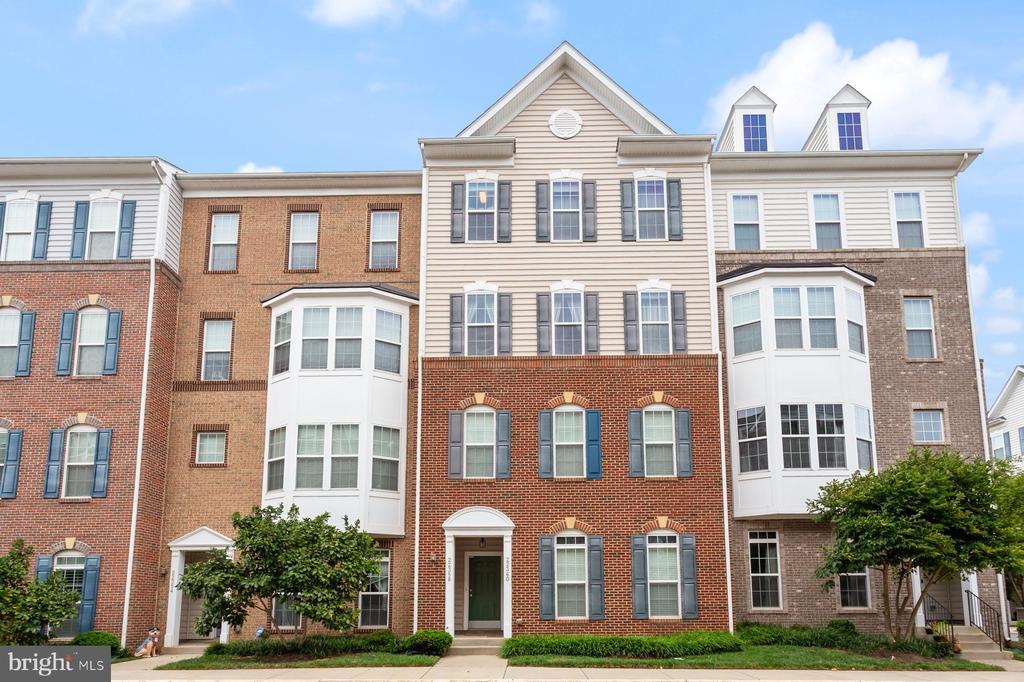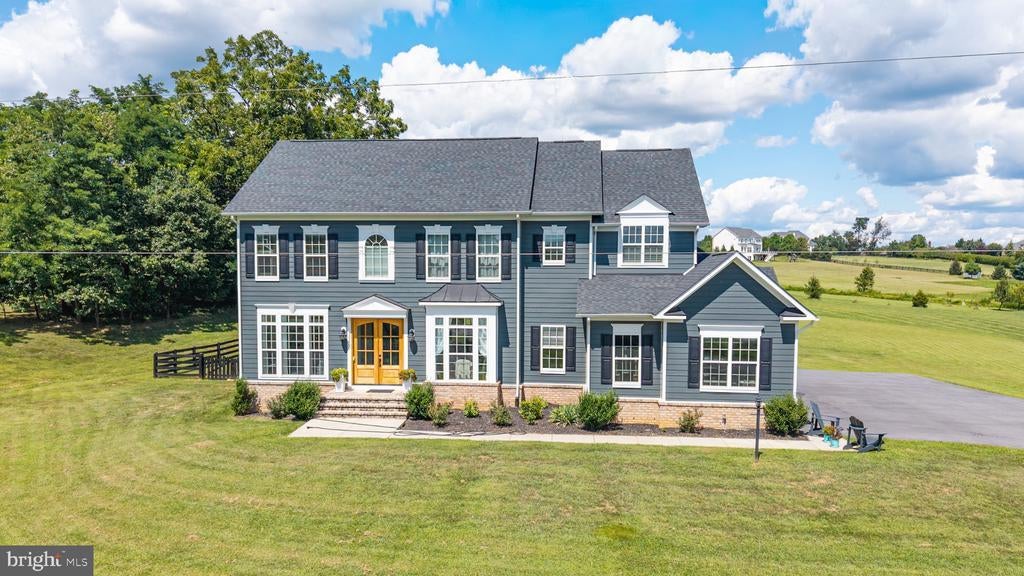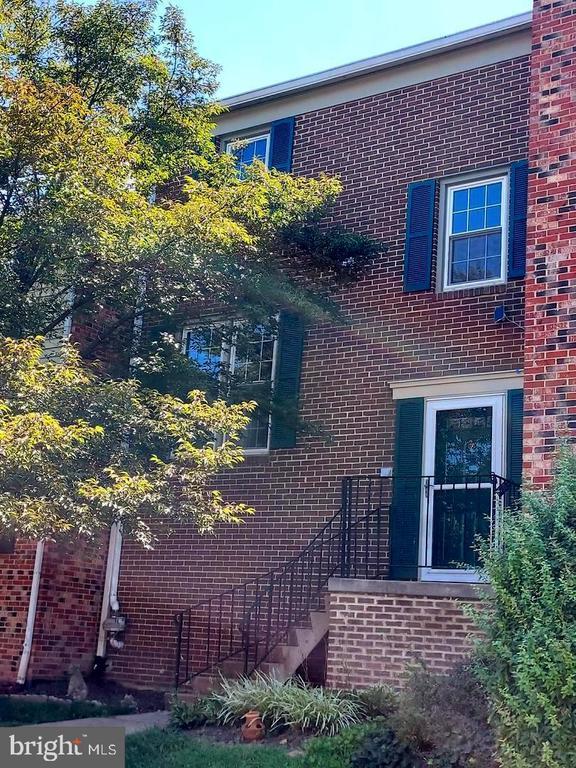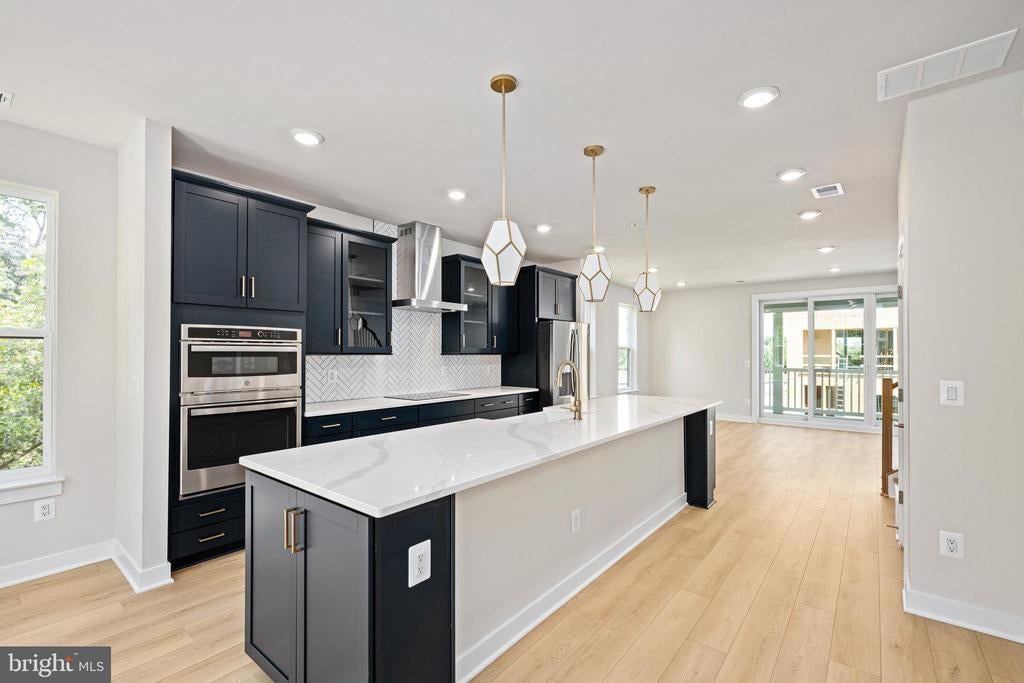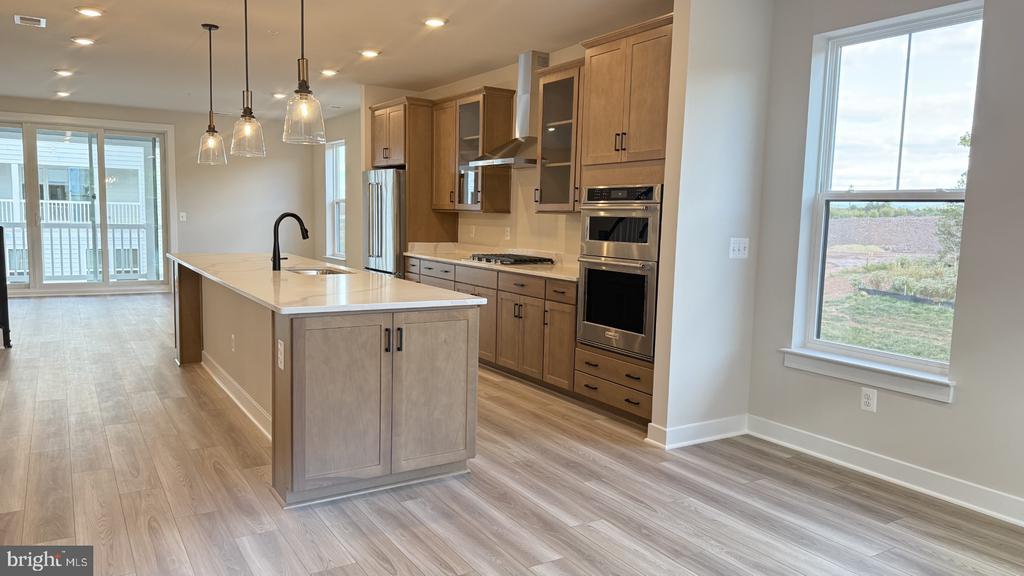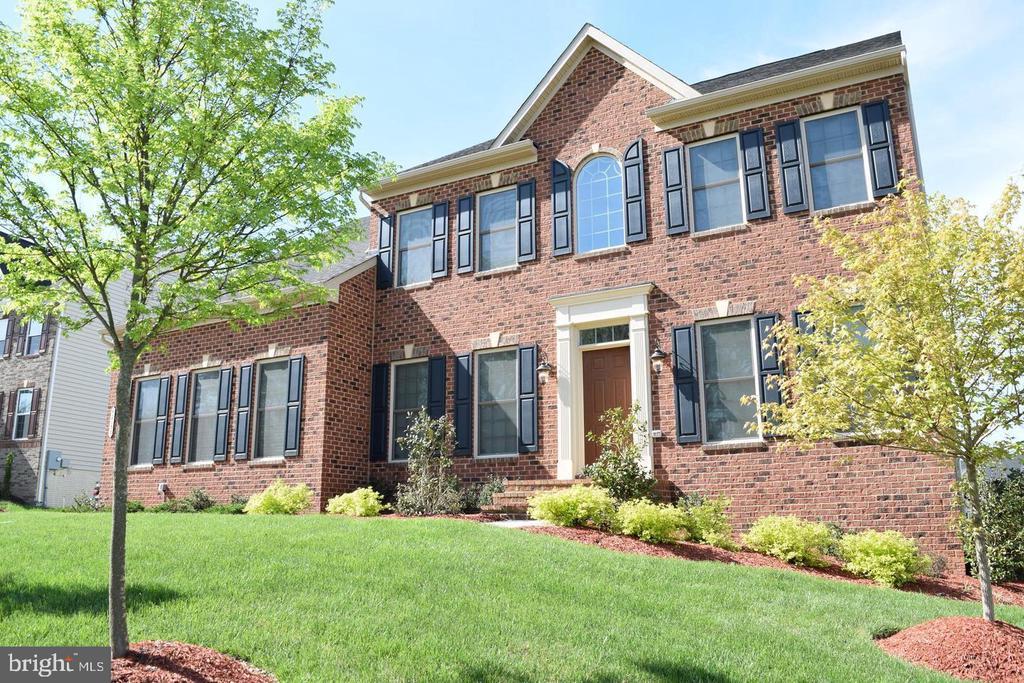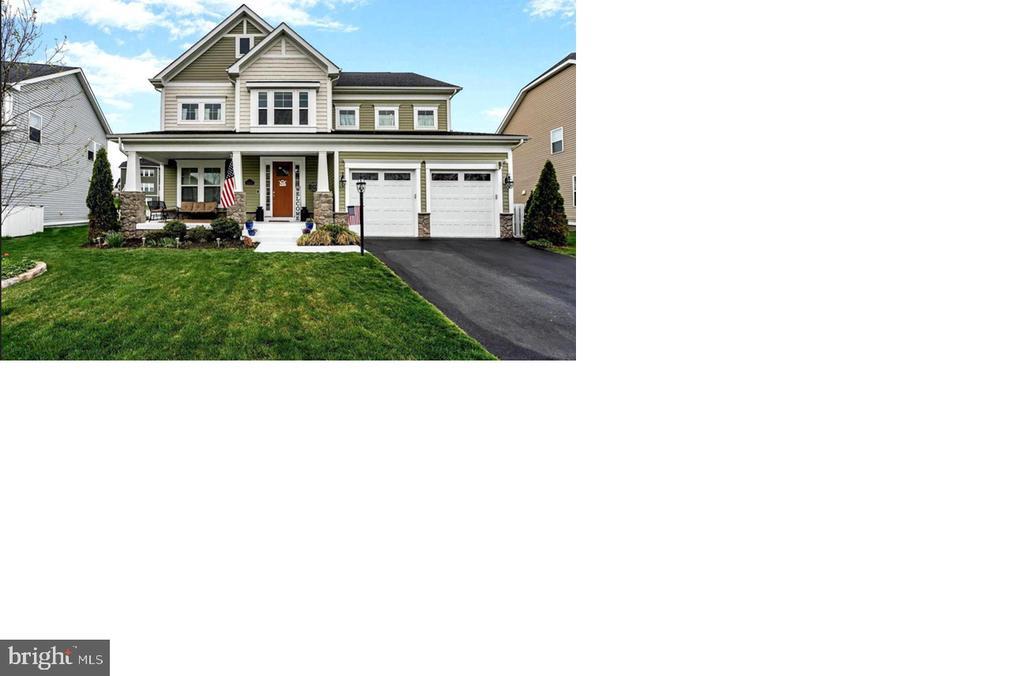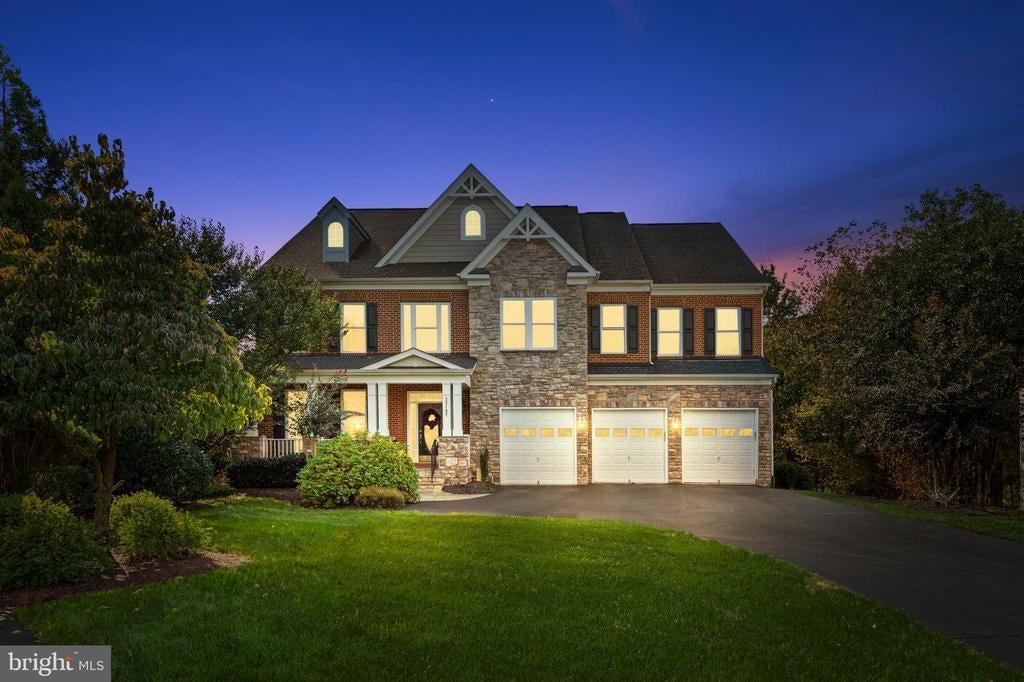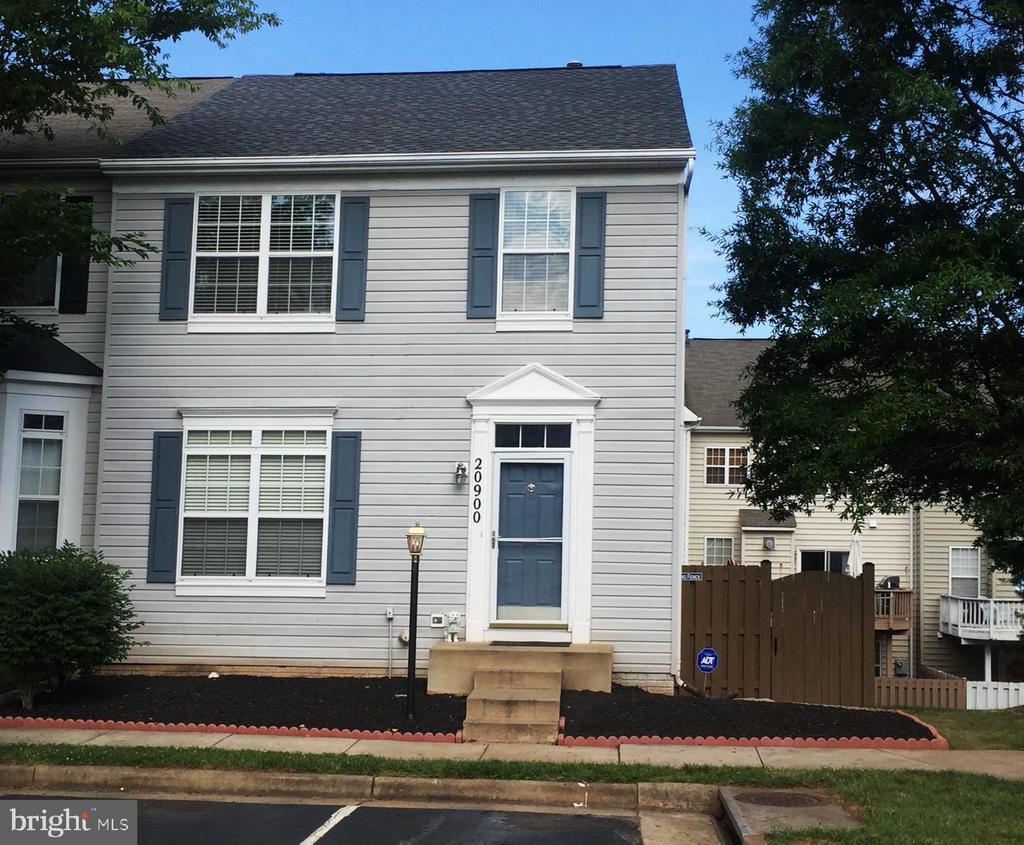Real Estate Statistics
| Average Price | $800K |
|---|---|
| Lowest Price | $0 |
| Highest Price | $25M |
| Total Listings | 1,571 |
| Avg. Days On Market | 60 |
| Avg. Price/SQFT | $247 |
Property Types (active listings)
Homes for Sale in Loudoun County
Loudoun County Insider's Guide: Everything You Need to Know About Living Here in 2025
I'm Chris Colgan, and I've spent my entire life watching Northern Virginia transform from sleepy suburbs into the economic powerhouse it is today. As a lifelong NOVA resident and real estate expert who's helped hundreds of families navigate this market, I can tell you that understanding Loudoun County's real estate market requires first understanding its absolutely remarkable transformation. This isn't just another suburban county—it's a place that has grown from a quiet farming community into the wealthiest, fastest-growing county in Virginia, all while managing to preserve its rural character and small-town charm.
In this comprehensive guide, we'll dive deep into how Loudoun County became what it is today, what makes it tick economically, and most importantly, what it's really like to live here in 2025. Whether you're a tech professional looking for your first home, a growing family seeking top-tier schools, or an executive relocating for a government contract, understanding Loudoun's unique character is essential to making the right housing decision.
The Story of Loudoun: A Three-Phase Transformation
To understand why Loudoun County commands some of the highest home prices in Virginia—and why families continue to flock here despite those prices—you need to understand its evolution through three distinct phases that shaped its identity.
Phase 1: The Agrarian Foundation (Pre-1962) Long before anyone dreamed of data centers or Metro stations, Loudoun County was known as the "Breadbasket of the Revolution." The county's fertile soil and strategic location made it a critical agricultural hub, feeding both Colonial and Confederate armies. For nearly two centuries, this was horse country—rolling hills dotted with family farms, historic estates, and charming towns like Leesburg (founded in 1758) and Middleburg. The landscape was defined by stone walls, red barns, and country roads that meandered through countryside that looked remarkably similar to the English countryside that inspired many of its early settlers. Farming families passed down land through generations, creating a culture deeply rooted in tradition and land stewardship. This agricultural heritage didn't just disappear—it evolved into today's agritourism industry that makes Loudoun one of Virginia's premier wine destinations.
Phase 2: The Dulles Boom (1962-1990s) Everything changed in 1962 with the opening of Washington Dulles International Airport. This wasn't just an airport—it was a catalyst that would fundamentally alter Loudoun County's trajectory. Suddenly, this rural county had a direct connection to the world, and developers took notice. The first wave of suburban development began in areas like Sterling, which transformed from farmland into planned communities almost overnight. The construction of the Dulles Greenway in the 1990s further accelerated development by creating a high-speed toll road that connected Leesburg directly to the airport and, by extension, to Washington D.C. During this phase, Loudoun began attracting government contractors and technology companies that needed proximity to both Dulles Airport and the nation's capital. The foundation was being laid for what would become one of the most important economic transformations in American suburban history.
Phase 3: The Digital Revolution & The Silver Line (2000s-Present) The third phase is where Loudoun County truly became unique. In the early 2000s, technology companies discovered that Loudoun offered something special: cheap land, proximity to D.C., excellent infrastructure, and favorable business policies. What started as a few data centers in Ashburn exploded into what's now known as "Data Center Alley"—the largest concentration of data center in the world. Companies like Amazon Web Services, Microsoft, Google, and hundreds of others built massive server farms here. Today, when you post on social media, stream a movie, or send an email, there's a good chance your data passes through a server humming quietly in an unmarked building in Ashburn. This digital infrastructure boom created thousands of high-paying jobs and attracted some of the most educated, technically skilled workers in the country. The most recent chapter in this transformation came with the arrival of the Silver Line Metro to Ashburn in 2022. For the first time in Loudoun's history, residents could hop on a train and be in downtown D.C. in under an hour. This Metro connection has been a game-changer, bridging the gap between suburban family life and urban career opportunities.

What Makes Loudoun's Economy & Infrastructure Work?
Understanding Loudoun's economic foundation is crucial for anyone considering moving here, because this economic strength directly impacts everything from job security to property values. According to Buddy Rizer, Executive Director of Loudoun Economic Development, the transformation has been remarkable: "We've gone from a community that was 81% dependent on residential real estate for our taxes to one of the strongest local economies anywhere in the country." Watch my full interview with Buddy Rizer on ColganTeam.com where we dive deep into Loudoun's economic strategy and future development plans.
Economic Pillars
-
Tech & Data Infrastructure: Loudoun County is home to the largest data center market in the world, with over 25 million square feet of data center space. Major employers include Amazon Web Services (which has its largest data center campus here), Microsoft, Google, Verizon Business, and hundreds of other tech companies. These aren't just server farms—they're the backbone of the modern internet, and they pay exceptionally well. The average tech salary in Loudoun exceeds $120,000, and many positions start well above that.
-
Federal Government & Contractors: Loudoun's proximity to Washington D.C. makes it a natural hub for government contractors and federal agencies. Companies like Booz Allen Hamilton, CACI, and SAIC have major operations here. The federal government provides stability that private sector economies often lack—when tech markets fluctuate, government contracts provide steady employment.
-
Dulles International Airport (IAD): Don't underestimate the economic impact of having Washington Dulles International Airport in your backyard. Dulles isn't just a transportation hub—it's an economic engine that employs tens of thousands and attracts international businesses that need global connectivity. United Airlines just announced a major new terminal expansion with underground Metro connectivity, reinforcing Dulles's position as a global gateway. For residents, it means easy access to anywhere in the world, which is particularly valuable for the many international business travelers who call Loudoun home.
-
Agritourism & Wine Industry: Here's a stat that might surprise you: Loudoun County now has more acres under grape than anywhere else in Virginia. With over 50 wineries, numerous breweries, and farm-to-table restaurants, the county attracts more than 2 million visitors annually through Visit Loudoun's tourism initiatives. As Rizer notes, "We're winning national awards, the Governor's Cup, and the quality is really getting good." This isn't just about tourism dollars—it's about lifestyle. Living in a place where you can tour wineries on Saturday afternoon adds genuine quality of life value.
Economic Resilience: The Numbers Don't Lie The county's economic management has been exceptional. While most Northern Virginia jurisdictions have been raising taxes, Loudoun County has reduced its tax rate over recent years, a cumulative reduction of 42 cents per $100 of assessed value. They're projecting another tax reduction in 2025 while simultaneously increasing services. The county now puts a penny from every tax dollar into road improvements and another penny into affordable housing. Perhaps most importantly, 50% of Loudoun's workforce now works within the county itself—a dramatic shift from its days as a bedroom community. This means shorter commutes, parents home for dinner, and a more sustainable economic model.
Infrastructure That Actually Works
-
Transportation Networks: Loudoun's transportation infrastructure is both its greatest strength and its most significant challenge. The county is served by major arteries including the Dulles Greenway (Route 267), Route 7, and Route 28. The Silver Line Metro now connects Ashburn to downtown D.C., with stops at Wiehle-Reston East, Herndon, Innovation Center, Dulles Airport, Loudoun Gateway, and Ashburn. However, let's be honest about the commute reality: if you're driving to D.C. during rush hour, you're looking at 45-90 minutes each way, depending on your starting point and destination. The Metro has helped significantly, but for most of Loudoun County, you're still completely car-dependent for daily life.
-
Quality of Life Infrastructure: Loudoun County consistently ranks among the highest quality of life areas in the United States. The median household income is approximately $172,000—the highest in the nation. The county has invested heavily in parks, libraries, and recreational facilities. Loudoun has over 75 parks covering more than 8,000 acres, including the 43-mile Washington & Old Dominion Trail that's perfect for biking and walking.
Future Development: The $65 Billion Game-Changer
The biggest story in Loudoun County's future is Rivana at the Innovation Center Metro station. In my exclusive interview with county leadership, Buddy Rizer explains why this project was a finalist for Amazon's HQ2 and represents what he calls "the legacy project." Learn more about this and other projects at my Loudoun Development News page.
What Makes Rivana Special:
-
One Metro stop from Dulles International Airport
-
Designed to attract government contractors, international businesses, and tech companies
-
Mixed-use development that balances Loudoun's rural heritage with urban amenities
-
Major groundbreaking announcement expected Spring 2025
-
Amazon HQ2 finalist location for greenfield development
The development philosophy is intentional: "It's going to be very walkable, very mixed-use, but still very green," explains Rizer. "It's not going to be a concrete jungle—it's going to be that mix between what Loudoun was and what Loudoun can be in the future." Why Rivana Matters for Real Estate: This isn't just another development—it's the county's bet on creating a new kind of community that bridges suburban and urban living. Think of it as Loudoun's answer to Tysons Corner, but designed from the ground up around Metro connectivity and modern work patterns. For homebuyers, Rivana represents the future of how Northern Virginia communities will evolve.
Beyond Rivana, the county has aggressive development plans around all Metro stations, including Loudoun Station, Morefield Station, Silver District West, and continued expansion of One Loudoun. The goal is to create multiple walkable, urban-feel communities while preserving the rural character of Western Loudoun.
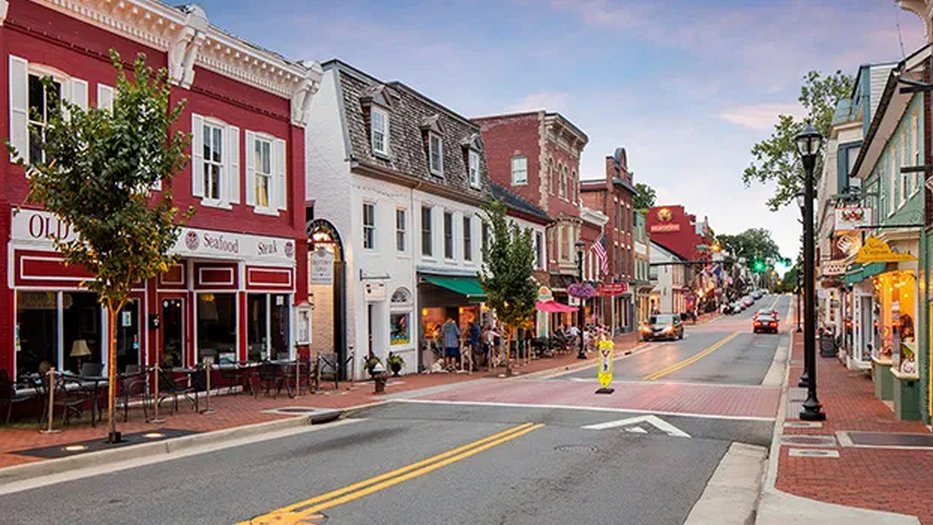
Loudoun Real Estate Market: Current Reality (July 2025)
Let me give you the unvarnished truth about Loudoun's real estate market based on the most recent data I'm seeing from June 2025.
Market Snapshot The median home sale price in Loudoun County is $805,000. Based on the latest data, this represents a 0.1% increase from the previous year, indicating a market that is stabilizing after years of aggressive growth. What's really happening is we're seeing a market that's normalizing after the pandemic frenzy. The average days on market has increased to 17 days—up from 13 days this time last year. This is still fast by national standards, but it gives buyers more time to make thoughtful decisions than the 3-5 day windows we saw in 2021-2022. Inventory is improving, with 806 active listings as of early July, which is up 52% from the same period last year. This means buyers have more choices, but it also means sellers need to be strategic about pricing and presentation. For a personalized look at the market, visit the Loudoun County Market Report on ColganTeam.com.
Housing Options & Price Points
-
Townhome Market ($550k - $800k): Loudoun's townhome market is incredibly strong, particularly in master-planned communities like Brambleton, Broadlands, and One Loudoun. These aren't your typical cramped townhomes—many feature 3-4 bedrooms, finished basements, and 2,000-3,000 square feet. The appeal is obvious: you get modern amenities, community pools and parks, walkable neighborhoods, and often maintenance-free living. For young professionals and families with children, these communities offer a turnkey lifestyle with built-in social networks.
-
Single-Family Home Market ($800k - $1.3M): This is the sweet spot for most Loudoun buyers. You'll find everything from newer construction in planned communities like South Riding and Lansdowne to more established neighborhoods with larger lots in areas like Leesburg. Many of these homes feature 4-5 bedrooms, 3+ bathrooms, and 3,000-4,500 square feet. The key differentiator is often lot size and age of construction—newer homes in planned communities might have smaller lots but modern layouts and energy efficiency, while older homes often offer more privacy and character.
-
Luxury & Estate Market ($1.5M - $10M+): Western Loudoun is where you'll find true luxury—horse farms, vineyards, and estates with 10-50+ acres. Areas like Middleburg, Round Hill, and parts of Leesburg offer a completely different lifestyle: privacy, space, and often historic charm. Creighton Farms represents the ultra-luxury segment, where homes range from $5-7 million and even NFL players have called home. These properties appeal to buyers who want a country estate lifestyle while maintaining access to D.C.-area employment and amenities.
School Excellence: A Primary Driver
Let's talk about why families pay Loudoun County's premium prices: the schools. Loudoun County Public Schools (LCPS) consistently ranks as one of the top school districts in Virginia. The numbers tell the story: 94%+ graduation rate, average SAT scores well above national averages, and an A+ rating for college preparation. But beyond test scores, LCPS offers specialized programs that keep families here through high school: the Academy of Engineering and Technology, dual enrollment programs with Northern Virginia Community College, and comprehensive Advanced Placement offerings.
For detailed information about specific schools, enrollment, and programs, visit the official LCPS information portal on ColganTeam.com. For many families, the school quality justifies the housing premium. When you're paying $800k+ for a home, you want confidence that your children are getting an education that will prepare them for competitive colleges and careers. LCPS delivers on that promise, which is why homes in top school zones often command premium prices and sell faster than comparable homes in lower-rated districts. The recent political attention around LCPS has created some uncertainty, but the fundamental educational quality remains strong. As a resident and real estate professional, I advise clients to focus on the academic metrics and visit schools personally rather than getting caught up in political noise.
Neighborhood Guide: Where to Live in Loudoun
Loudoun County is incredibly diverse in character, and where you choose to live will dramatically impact your daily experience. Let me break down the major areas by lifestyle and what appeals to different types of buyers.
Ashburn: "The Heart of the Tech Boom"
-
June 2025 Median Sales Price: $825,000 Ashburn is where Loudoun's transformation is most visible. This is master-planned community living at its finest, with neighborhoods like Brambleton, Broadlands, and Ashburn Village offering amenities that would make resort developers jealous: multiple pools, fitness centers, miles of walking trails, and town centers with restaurants and shopping. The crown jewel is One Loudoun, which features iFly indoor skydiving, TopGolf, a massive shopping center, farmers markets, and a movie theater. You can literally walk from your townhome to dinner and entertainment. The Washington Commanders practice facility is here, and many NFL players call Ashburn home—I've even seen $1.3 million townhouses with elevators in them.
-
Who Lives Here: Tech professionals, young families, and anyone who values convenience and amenities over space and privacy. The proximity to data centers means many residents can walk or bike to work. The new Metro station in Ashburn has made this area even more attractive to D.C. commuters.
Brambleton: "The Master-Planned Paradise" Brambleton represents the pinnacle of planned community living. This completely designed community features unique architectural styles that feel more like California than Virginia, extensive walking trails, and "The Barn" - an incredible park and recreation facility that has to be seen to be believed. I've had people from Florida call me specifically about Brambleton after hearing about its walkability and amenities. On a recent Tuesday afternoon visit, there were people walking around looking at lots at 2 PM—that's the kind of energy this community generates.
-
Who Lives Here: Affluent families who want the ultimate in suburban amenities and don't mind paying premium prices for newer construction and resort-style living. Also popular with 55+ buyers who want walkable communities closer to grandchildren.
Leesburg: "Historic Charm Meets Modern Suburbia"
-
June 2025 Median Sales Price: $857,760 Leesburg successfully balances its role as the county seat with genuine historic charm. The downtown area features locally-owned restaurants, boutiques, and regular farmer's markets, while surrounding neighborhoods offer everything from historic homes to modern planned communities. The Leesburg Corner Premium Outlets remain one of the major shopping destinations on the East Coast, but it's the historic Old Town Leesburg that gives this area its character. You can walk around local shops, grab dinner at locally-owned restaurants, and feel like you're in a real small town rather than a planned community.
-
Who Lives Here: Families who want small-town charm with suburban conveniences, professionals who work in the county government or local businesses, and anyone who appreciates walkable downtowns and community character.
Sterling: "Value and Convenience"
-
June 2025 Median Sales Price: $615,000 Sterling often gets overlooked, but it offers some of the best value in Loudoun County. As one of the older developed areas, it has mature trees, established neighborhoods, and excellent access to both Dulles Airport and major commuter routes. Most houses were built in the 1970s and 1980s, so you're getting more space and often larger lots than newer developments.
-
Who Lives Here: First-time homebuyers, families prioritizing affordability and convenience, airport employees, and anyone who wants Loudoun County schools without paying premium prices.
Aldie: "New Community Excellence"
-
June 2025 Median Sales Price: $1,025,000 When I was a kid driving my dad to the airport, this was all country roads with no lights. Now Aldie has exploded into a thriving community with brand new homes, shopping centers, and schools. The transformation has been remarkable, offering newer construction with good access to major commuter routes.
-
Who Lives Here: Families seeking newer construction without quite paying Ashburn prices, professionals who work in various parts of Northern Virginia and want central access to major highways.
South Riding: "Established Excellence" South Riding is a massive planned community that started in the 1990s and has its own ZIP code. The community features golf courses, an indoor pool, and thousands of homes in a well-established setting. Several of my family members live here, and it's the kind of place where the amenities justify the lifestyle.
-
Who Lives Here: Families who want established amenities and a proven community track record, professionals working throughout Northern Virginia who value the central location and access to multiple job centers.
Western Loudoun (Purcellville/Middleburg): "Horse Country & Small-Town Life"
-
Purcellville June 2025 Median Sales Price: $876,250
-
Middleburg June 2025 Median Sales Price: $1,547,500 This is where Loudoun County's agricultural heritage lives on. Western Loudoun offers space, privacy, and a genuine rural lifestyle while maintaining access to D.C.-area employment. The towns of Purcellville and Middleburg maintain their small-town character, complete with local cafes, antique shops, and community festivals. Middleburg deserves special mention as Virginia's horse country. This is where the Mars candy family has their estate, where Salamander Resort brings international visitors, and where the town was named "America's number one Christmas town." I had clients who went to Middleburg for Mother's Day and met a mother-daughter duo who had flown in from Florida just to visit—that's the kind of destination appeal this area has. The Kennedy family had historical ties here, and it remains a destination for old money and new wealth seeking authentic rural luxury. During Christmas, the town hosts parades with foxhunting groups, horses, and dogs in traditional outfits—it's genuinely magical.
-
Who Lives Here: Empty nesters seeking space and tranquility, horse enthusiasts, wine lovers, and anyone who values privacy and rural beauty over convenience and amenities.
Click here for Loudoun County Homes with Pools
The Honest Truth: 7 Things You Might Not Like About Loudoun County
I believe in giving my clients the complete picture, including the potential downsides. Here are seven things that might make Loudoun County a poor fit for your lifestyle:
-
The Commute Can Be Brutal. Unless you work in Loudoun County or can use the Metro, you're looking at a significant daily commute. Even with the Silver Line, getting to downtown D.C. takes 45-60 minutes each way. If you're driving, count on 60-90 minutes during rush hour, and that's assuming no accidents or weather delays. The Dulles Greenway toll costs add up ($4.75-$7.50 each way depending on your route), and Route 7 traffic is notorious throughout Northern Virginia.
-
It Can Feel Like "Suburbia on Steroids." Eastern Loudoun, particularly areas like Ashburn and Brambleton, can feel overwhelmingly planned and corporate. HOAs are everywhere, and they're not shy about enforcement. Some residents complain that neighborhoods lack character and feel like outdoor shopping malls with houses attached. If you value architectural diversity, historic character, or urban grit, parts of Loudoun might feel sterile.
-
You're Paying a "Sunshine Tax." Loudoun County is expensive, and not just housing costs. Everything from grocery stores to restaurants to services carries a premium price tag. Property taxes are actually lower than Arlington or Fairfax thanks to the strong commercial tax base, but sales taxes, meal taxes, and general cost of living are all above national averages. You're paying for the privilege of living in America's wealthiest county.
-
The East/West Divide is Real. Eastern Loudoun (Ashburn, Sterling, Leesburg) feels like a different world from Western Loudoun (Purcellville, Middleburg). The east is fast-paced, dense, and technology-focused. The west is slow, rural, and agriculture-focused. This divide can create tension in county politics and can make it difficult to feel connected to a single "Loudoun County" identity.
-
Constant Construction & Growth. Loudoun County is always building: new data centers, new housing developments, new retail centers, and infrastructure improvements. This means constant road construction, changing traffic patterns, and neighborhoods that feel unsettled. If you value stability and predictability, the constant change can be exhausting.
-
The Political Climate Can Be Tense. Without taking sides, I need to acknowledge that Loudoun County has been at the center of several high-profile political controversies, particularly around school board policies. These issues have created divisions within the community and attracted national attention. For some families, this political tension affects their daily experience and comfort level in the community.
-
Public Transit is Still Limited. While the Silver Line is a huge improvement, the reality is that most of Loudoun County remains completely car-dependent. Bus service is minimal, and if you don't live near a Metro station, you're driving everywhere: grocery shopping, school pickup, entertainment, and commuting. For people accustomed to urban transit options, this can feel limiting and expensive. For official schedules and fare information, visit the WMATA Silver Line portal on ColganTeam.com.
Investment Perspective: Is Loudoun County Real Estate a Smart Buy?
As someone who's watched Loudoun County evolve for decades, I'm frequently asked whether buying here makes financial sense. Let me give you my honest assessment:
The Bull Case: Loudoun County's economic fundamentals are exceptionally strong. The data center industry isn't going anywhere—it's growing exponentially as more businesses move to cloud computing, AI, and data processing. This creates a virtuous cycle: a constant influx of high-paying jobs fuels housing demand, supports retail and services, and keeps the commercial tax base robust, which in turn keeps residential property taxes lower than in neighboring counties. The planned growth around the Metro and projects like Rivana ensures that Loudoun is not resting on its laurels but is actively building its future. For these reasons, an investment in Loudoun real estate is a bet on one of the most resilient and forward-looking local economies in the United States.
Final Thoughts Loudoun County is a community of contrasts: a place of deep history and relentless innovation, of quiet country roads and humming data centers. It offers an unparalleled quality of life for those who can navigate its complexities. Making the right decision here requires more than just looking at listings; it requires a deep understanding of the forces shaping the market.
Are you considering a move and wondering which of these communities is the right fit for you? Let's talk.

Start searching for your dream home now.
When it comes to convenience, our site is unparalleled. Whether you're in the comfort of your home, or on the go.
Our site works flawlessly on multiple devices so you can find the information you need.




